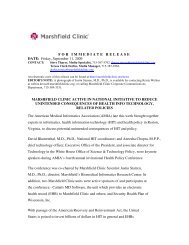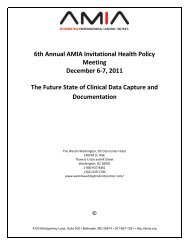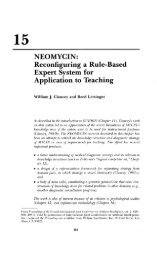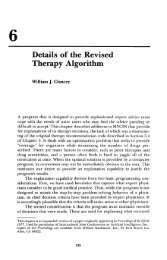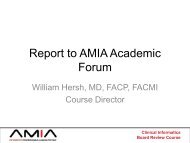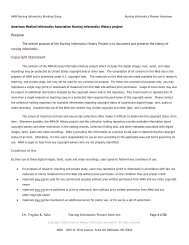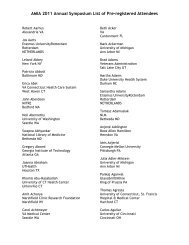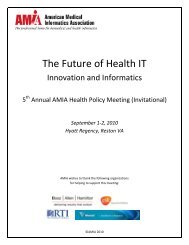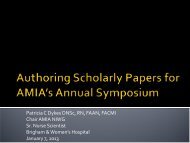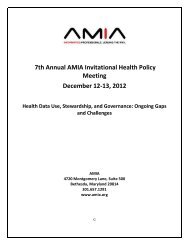Chapter 3 - People
Chapter 3 - People
Chapter 3 - People
Create successful ePaper yourself
Turn your PDF publications into a flip-book with our unique Google optimized e-Paper software.
64 The Evolution of MYCIN’s Rule Forminvolving any number of rules.) Special changes to the rule monitor wererequired to prevent this undesirable occurrence (see <strong>Chapter</strong> 5).15. The tracing mechanism: As is described in <strong>Chapter</strong> 5, we made thedecision to determine all possible values of a parameter instead of determiningonly the value specified in the premise condition of interest. Thispotential inefficiency was tolerated for reasons of user acceptance. W,efound that physicians preferred a focused and exhaustive consideration ofone topic at a time, rather than having the system return subsequently tothe subject when another possible value of the same parameter was underconsideration.16. The ASKFIRST concept: Pure production systems have not generallydistinguished between attributes that the user may already know withcertainty (such as values of laboratory tests) and those that inherently requireinference. In MYCIN this became an important distinction, whichrequired that each parameter be labeled as an ASKFIRST attribute (originallynamed LABDATA as discussed in <strong>Chapter</strong> 5) or as a parameter thatshould first be determined by using rules rather than by asking the user.17. Procedural conditions associated with parameters: We also discoveredunusual circumstances in which a special test was necessary before MYCINcould decide whether it was appropriate to ask the user for the value of aparameter. This was solved through a kind of procedural attachment, i.e.,an executable piece of conditional code associated with a parameter, whichwould allow the rule monitor to decide whether a question to the user wasappropriate. Each parameter thus began to be represented as a frame withseveral slots, including some whose values were procedures.18. Rephrasing prompts: As users became more familiar with MYCIN,we found that they preferred short, less detailed prompts when the programrequested information. Thus a "terse" mode was implemented andcould be selected by an experienced user. Similarly, a reprompt mechanismwas developed so that a novice user, puzzled by a question, could be givena more detailed explanation of what MYCIN needed to know. These featureswere added to an already existing HELP facility, which showed examplesof acceptable answers to questions.19. Multiple instances of contexts: Some of the questions asked by MY-CIN are necessary for deciding whether or not to create contexts (ratherthan for determining the value of a parameter). Furthermore, optimalhuman engineering requires that this kind of question be phrased differentlyfor the first instance of a context-type than for subsequent instances.These alternate prompts are discussed in <strong>Chapter</strong> 5.



